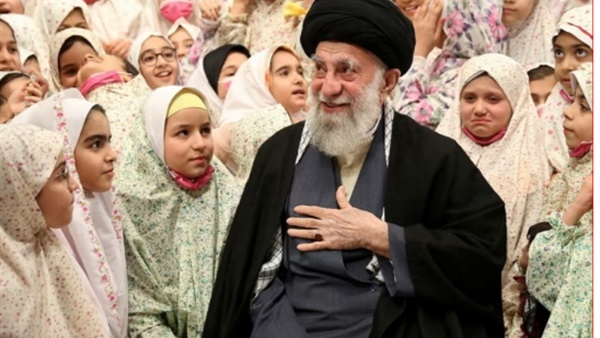Iran's Ayatollah Khamenei Embraces Active Role in Public Life Amidst Protests and Pressure for Change

Iran’s supreme leader Ayatollah Ali Khamenei is taking a
more active role in public life, attempting to solidify the authority of the
Islamic regime in the wake of the most intense protests since the 1979 Islamic
Revolution. Khamenei recently pardoned tens of thousands of prisoners,
including some involved in the anti-regime protests that were sparked by the
death of a 22-year-old woman last year. He has also been seen on television
praying with girls in colourful Islamic coverings, and attending meetings with
Iranian industrialists and entrepreneurs.
Despite these public displays, there are no indications that
the 83-year-old cleric is planning to change the theocratic regime that has
governed the country for over four decades. Instead, Khamenei appears to be trying
to manage his image and address some of the many issues facing Iran.
Last September, protests erupted following the death of
Kurdish Iranian Mahsa Amini, who was arrested for not following Islamic dress
codes. The protests quickly spread across the country, with Khamenei being the
target of much of the anger due to his responsibility for the social
restrictions that Amini was accused of contravening, as well as the political
repression and stagnant economy in Iran.
The protests lasted for four months before dwindling and
being replaced by widespread frustration and anger. The execution of four
protesters who had killed or injured security forces only served to amplify the
sense of hopelessness.
Those who support the hardline regime say that Khamenei has
emerged stronger after the unrest, with pro-regime forces staging rallies this
month to mark the anniversary of the 1979 revolution. Hardline politician
Hamid-Reza Taraghi said that Khamenei would not change the principles of the
Islamic republic, even if one million people were out in the streets
protesting.
The opposition has called for an end to Khamenei’s absolute
power and the creation of a new secular democratic establishment. However, the
inability of the protest movement to achieve meaningful change highlights the
difficulties in dealing with a system that has vast, multi-layered security and
economic networks of loyalists. None of the regime’s critics have presented a
viable alternative to the current system, and no popular opposition leader has emerged.
While the regime’s hostility towards the West remains
unchanged, reformists have called for a deal with the US to revive the 2015
nuclear accord, which would bring sanctions relief, and for the relaxation of
political, social, and cultural restrictions. They have also warned that the
regime’s policies will only fuel growing dissent across society.
Former prime minister turned regime critic Mir-Hossein
Moussavi, who has been under house arrest for more than a decade, has called
for regime change for the first time. This sentiment has resonated with many
Iranians, but other reformists close to former president Mohammad Khatami
believe that toppling the system will be too costly and have urged the supreme
leader to embark on fundamental reforms.
The challenge for Khamenei is to find a balance between
managing the country’s challenges and maintaining the regime’s power. Analysts
say that his position as the only person with the authority to introduce
reforms means that he is the only hope for those who seek change. Nonetheless,
with a waning public legitimacy of the regime, hardliners still not realizing
the seriousness of the situation, and parliamentary elections early next year,
the road ahead for Iran remains uncertain.







